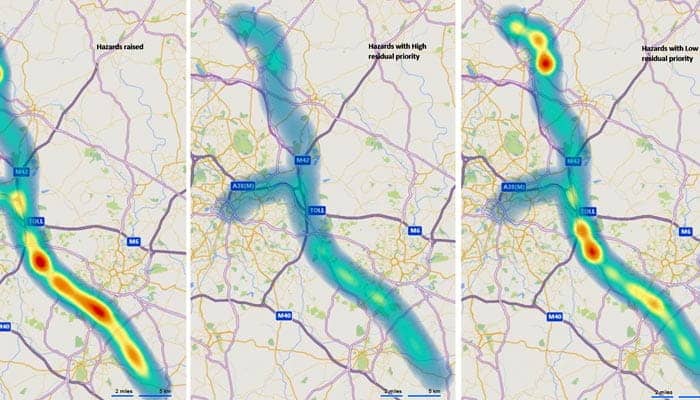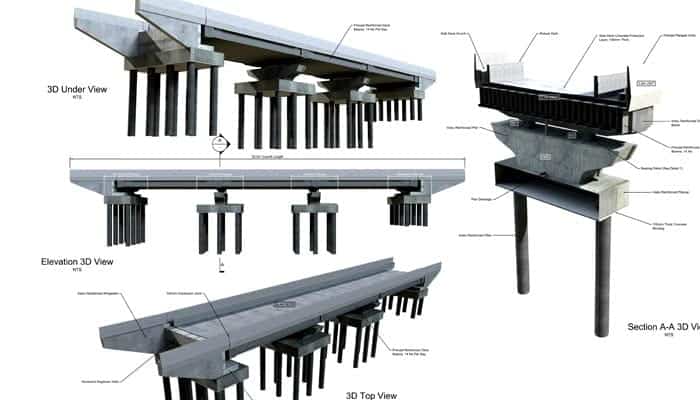Implementing Better Design Initiatives to Lower the Environmental Impact during Operations
Mott MacDonald
Carbon Portal
Mott MacDonald will lower carbon emissions from High Speed 2’s operations by 3.2 million tons by using a carbon portal to choose the best design options.
Key Project Details
- Project: Carbon Portal
- Infrastructure Delivered: A carbon portal that can measure the carbon impact of design decisions
- Owner: Mott MacDonald
- Lead Engineers: Mott MacDonald
- Completion Date: 2019

Mott MacDonald created a carbon portal to help measure the carbon impact of design decisions during the development of High Speed 2.

By choosing the best possible options, Mott MacDonald will lower carbon emissions by 3.2 million tons during the initial 60 years of High Speed 2’s operations.
Reducing High Speed 2’s Carbon Impact
In 2019, the United Kingdom became the first major economy to mandate net-zero carbon emissions by 2050. To support the nation’s commitment to fighting climate change, Mott MacDonald needed to overhaul how they approached project development so that they could greatly reduce emissions. They decided to use their work on a section of High Speed 2 (HS2), a new, 530-kilometer rail line running through Great Britain, as a pilot project for reforming project development. Their 70-kilometer section presented numerous challenges and complexities, as it includes 8 viaducts, 68 over passes, 27 under passes, 31 culverts, 74 embankments, 40 cuttings, three tunnels, and 14 retaining walls.
Collaborating via a Carbon Portal
Mott MacDonald realized that by keeping track of the carbon cost of every decision made during the design phase, they could determine both the environmental impact of construction and the environmental impact of operations over time. Their carbon portal concept would use a digital twin of the project that is embedded with detailed project information to help them determine design options with the lowest impact. However, their platform would need to be intuitive and facilitate collaboration, as their partnership with SYSTRA JV on their HS2 work involved the work of 600 people from 35 offices in 28 cities.
Incorporating Carbon Information into a Digital Twin
After evaluating potential solutions, Mott MacDonald determined they could create a carbon portal with the level of detail and collaboration needed by using Bentley applications. After they built the digital twin and populated it with project data, they created a drag-and-drop interface that allows team members to import comprehensive carbon and cost datasets for every action and asset. The team uses the carbon portal to easily compare various options, whether it is at needs definition, the optioneering stage, or the detailed design stage, to determine the greenest possible solution, as well as to demonstrate where carbon and cost reductions have occurred.
Reducing Emissions for 60 Years
Carbon savings accrue across all aspects of a project but, in the case of HS2, industry research demonstrates 90% of possible savings and innovations are attained within the first 10% of project spend. Mott MacDonald estimates that construction emissions for their segment will be 5.8 million to 6.1 million tons of carbon dioxide equivalent (MtCO2e). However, their decisions are also expected to impact HS2’s operations when complete. The first 60 years of HS2’s operations are expected to result in an additional carbon saving of 3.0-3.2 MtCO2e.
The Impact
Contributing to sustainable and resilient infrastructure, and to progress on the U.N. Sustainable Development Goals:
- Support the U.K.’s commitment to battle climate change.
- Eliminate up to 3.2 million tons of carbon dioxide emissions during operations.
- Determine the environmental impact of construction and operations over time.
“Visualizing the risks and assumptions geospatially enabled our design teams to better understand areas of high risk and identify gaps to respond to and address during the design development phase.”
Tom Olasina, Project Director, Mott MacDonald
